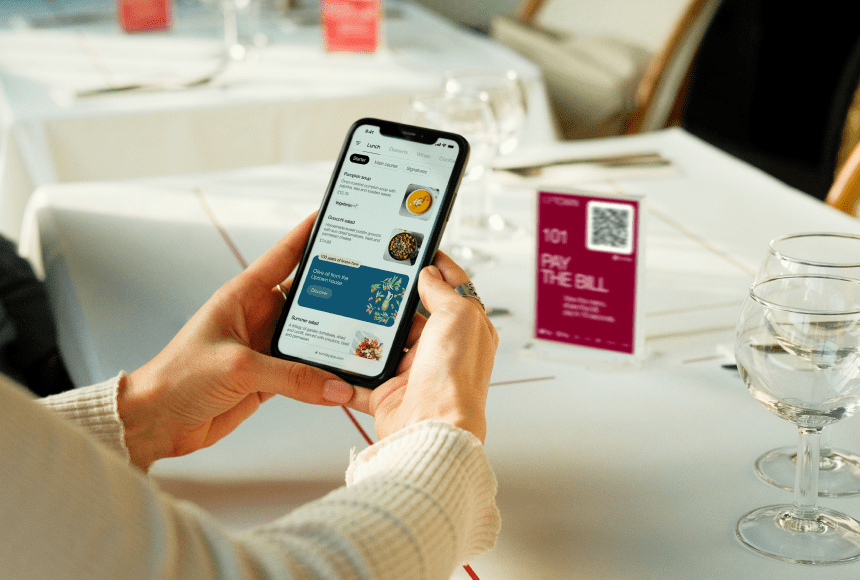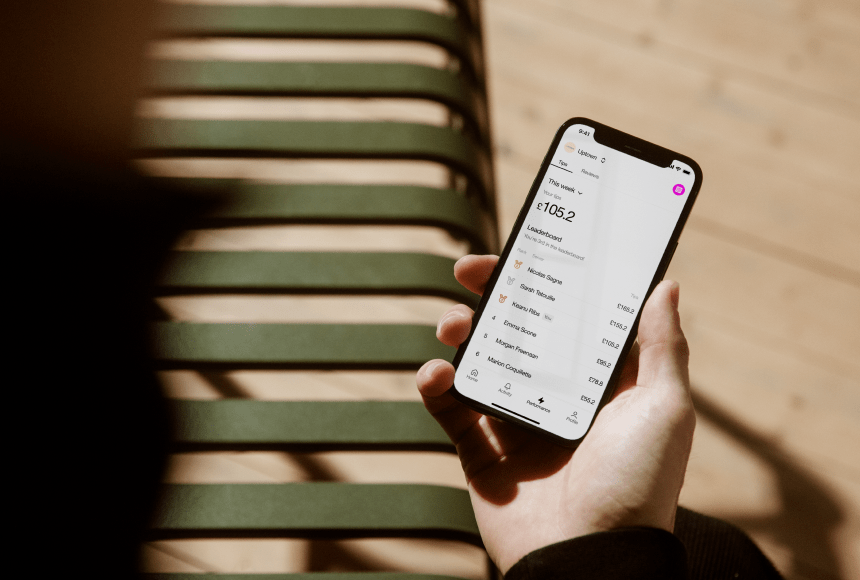
Bringing Smart Tech to the Table: A Guide for Restaurant Owners
Why AI Is Knocking on Your Restaurant’s Door
In the UK’s evolving dining landscape, artificial intelligence (AI) is buzzing everywhere—from back-office logistics to front-of-house ordering systems. But when it comes to menu design and recommendations, is AI really a game-changer, or just another flashy tech gimmick? Some restaurants have already adopted AI-driven menu tools to tailor dish suggestions, boost upselling, and predict inventory needs. Others remain sceptical, worried about losing the personal touch that makes hospitality so special.
Yet, consider recent data from BigHospitality, indicating that more diners now expect digital-savvy experiences. AI can do more than just spit out random suggestions—it can enhance your guest journey by delivering timely, precise recommendations. This article dissects how AI can factor into your menus, whether it’s a high-tech transformation or a simple edge for boosting sales. We’ll look at the benefits, potential pitfalls, and how you can gradually implement AI without alienating staff or loyal patrons.
1. Decoding AI-Enhanced Menus
When we say “AI in menus,” we’re talking about technologies that analyse customer data—such as past orders, time of day, popular pairings—and then offer dynamic suggestions. Picture a digital menu that shifts emphasis based on which items are trending or which inventory might be abundant, or a system that personalises dish recommendations for each returning guest. These features aim to increase average spend, streamline your operations, and ultimately, deliver a more engaging experience.
- Dynamic pricing: Some AI engines can test small price changes on certain items to see how demand responds, optimising your revenue per dish.
- Personalised combos: If the system knows a customer often orders a cappuccino with a croissant, it may suggest a new pastry or an add-on the next time they log in.
- Menu layout adaptation: Dishes that are performing well might feature prominently on a digital menu, while slower sellers drop to the bottom—or get recommended less frequently unless stock is piling up.
All of these elements can improve the guest’s journey. At the same time, it’s important not to let automation overshadow your own brand identity and that personal warmth your regulars love.
2. The Potential Advantages of AI-Driven Menus
AI menu solutions are still relatively new in restaurants, but they’re showing promise. Below are some of the standout benefits you might unlock when adopting this technology—especially if you do it thoughtfully.
2.1 Boosting Average Spend
A big reason restaurants explore AI is to nudge diners towards higher-margin items. By analysing real-time sales and historical trends, your menu can highlight profitable specials or complementary dishes (“Would you like a side of roast vegetables with that steak?”). The result? More upsells without making diners feel overly pressured. Meanwhile, you maintain that subtle balance between genuine guidance and blatant suggestion.
- Automated recommendations: Like an e-commerce site that says, “People who bought this also liked that,” your menu can suggest the right sides, desserts, or pairings.
- Flash promotions for slow-moving stock: If you have a surplus of a particular fish on a Monday, the AI can spotlight that dish with a gentle discount or special mention, boosting sales and reducing waste.
2.2 Personalised Guest Experience
Ever had a diner who returns monthly and always asks for gluten-free suggestions? AI can remember those preferences and adapt your digital menu accordingly, highlighting items that fit their dietary needs. This kind of personal touch usually demands an attentive server—but with AI, it scales easily, welcoming repeat guests with the same warmth staff would provide, minus the potential human slip-ups.
- Saved favourites: A returning customer might see their last order pinned at the top, making reordering quick. Think of it like “recently played tracks” on a music app, but for restaurant dishes.
- Dietary filters: People with allergies or certain diets often dread scanning entire menus. AI can streamline it, only showing them suitable options—no extra scrolling required.
2.3 Better Stock Management
If your system knows, for instance, that the bolognese sells best after 7 p.m. on weekends, it can help the kitchen plan sauce quantities more accurately. As diners place orders, your AI can alert staff when an item is nearing its daily limit, or strategically push items you have in surplus.
- Predictive ordering: Some advanced algorithms estimate how many ingredients you’ll need, reducing last-minute dashes to suppliers.
- Dynamic menu editing: If you run out of a certain fish or main, the AI can gray it out instantly, so no diner tries to order something that’s gone. This spares staff from awkward “We’re out, sorry!” conversations.
Every bit of accuracy helps. With less guesswork, you keep overheads in check and maintain a steadier cash flow—while cutting down waste, which eco-conscious diners appreciate.
3. Potential Drawbacks and How to Avoid Them
AI might sound like a silver bullet for modern restaurants, but it’s not risk-free. Careful planning and a healthy dose of scepticism can prevent technology from overshadowing your genuine hospitality.
- Over-reliance on data: Good data drives AI. If your records are spotty or the system is new, your predictions might be off. Always cross-check with staff insights—they know real-world nuances that data alone might miss.
- Loss of personal touch: Some guests love chatting about the daily special with a server who truly knows the menu. If your AI is too pushy or too prominent, you risk feeling impersonal. Instead, make sure staff remain central in recommending, with AI playing a support role.
- Implementation costs: Licensing or developing AI solutions can eat into your margin. Weigh the potential lift in sales and customer satisfaction against the upfront expense. Sometimes, simpler solutions—a better POS or an integrated digital platform like sunday—deliver immediate payback without monstrous overheads.
Remember, AI should enhance your existing identity, not replace it. By maintaining your restaurant’s unique warmth, you’ll use these tools as catalysts for improvement rather than letting them dictate every decision.
4. Incorporating AI Features Gradually
You might worry about overwhelming your staff—or your diners—by throwing in complex systems overnight. Instead, consider a phased approach. Start small, gather feedback, and expand only when you see tangible results.
4.1 Focus on One Aspect First
If improved upselling is your priority, add an AI-based recommendation engine to your digital menu. Let it highlight certain dishes based on popularity or margin. Evaluate how well it performs over a few weeks. If you see a noticeable boost in average spend or fewer unsold items, consider layering on additional features, like personalising returning customers’ menus or refining portion predictions.
4.2 Trial Runs with Limited Groups
Perhaps test the AI system only during quieter shifts or on a subset of your loyal customers. Use direct feedback—“Did those suggestions help you choose faster? Did you like the recommendations?”—to refine the algorithm. Your staff can also weigh in, telling you if they found the AI suggestions helpful or if they noticed any friction with diners.
- Beta approach: Label it as a “new digital assistant” or “beta menu recommendations,” so customers know you’re still perfecting it, inviting them to offer suggestions or criticisms.
5. The Role of Payment Tech in AI Integration
Another piece of the puzzle: how do you link AI insights to the final purchase? Payment solutions that track order details—like sunday—can feed data back into your AI, refining its models on what’s popular or which combos generate the highest tips. For example, if a certain dessert consistently leads to a sweet tip, your AI might highlight that item more frequently for guests who selected a similar main course.
- Seamless checkouts: If diners interact with a digital menu, they can seamlessly pay via a QR code. This friction-free process often translates into better reviews and repeated custom, especially among tech-friendly clientele.
- Real-time updates: The system can see which dishes were paid for and in what sequence. That data might show a correlation, like “People who order the starter soup often choose the fish.” Then your AI can use that to push fish suggestions next time soup is selected.
Ultimately, AI is about synergy—tying together your menu, your ordering interface, and your payments into a cohesive cycle that continually learns and refines. That’s a big leap forward from paper menus or static screens that never adapt or gather insights.
6. Gauging the ROI of AI-Enhanced Menus
Numbers are vital. Otherwise, how do you justify the cost or the staff training hours? Keep an eye on these metrics to see if AI is delivering a real sales boost or just glitzy illusions:
- Average spend per head: Compare pre-implementation data to new figures. A steady rise often signals that your suggestion engine is working.
- Menu item popularity shifts: If certain items once collected dust but are now trending due to targeted AI promotions, that’s a win.
- Reduced waste: This is especially relevant for fresh ingredients like seafood or pastries. If your daily discard pile shrinks because AI effectively promotes soon-to-be-expired items, you’re seeing savings.
If the data doesn’t show improvement, you might need to adjust your approach. Maybe your menu’s design isn’t intuitive, or the AI is pushing items that simply aren’t popular. Stay flexible, iterating as you learn more from real diner interactions.
7. Future Possibilities: Voice Assistants, AR, and Beyond
While we’re focusing on AI-driven recommendations in menus, this technology continues to grow. Looking ahead, you may see restaurants employing voice assistants to chat with diners about dietary restrictions or augmented reality (AR) experiences that visualise how a dish will look. Imagine scanning a QR code, pointing your phone at the table, and seeing a 3D rendering of tonight’s special—complete with ingredient details or a short chef’s note.
- Voice-based ordering: Similar to a home assistant, diners might ask a table device for suggestions. The AI listens, cross-references their past visits, and responds with tailored picks. Staff time is saved, yet personal recommendations remain strong.
- Virtual tasting menus: For high-end spots, an AR menu might show each course in shimmering detail, guided by AI to emphasise pairings or highlight new arrivals for returning guests.
Sure, it sounds futuristic, but given how rapidly technology evolves, it could be around the corner. Adopting AI now—on a smaller scale—could position you to embrace these developments more smoothly down the line.
Deciding If AI Is Right for Your Restaurant
At its best, AI can be a genuine driver of extra revenue and improved customer satisfaction. Diners welcome convenience, and well-targeted suggestions can feel like friendly guidance. The trick is to integrate it thoughtfully, respecting your brand’s unique style. Keep your servers and staff in the loop—after all, they provide the human touch that no algorithm can fully replicate.
As consumer expectations evolve, forward-thinking operators will likely find AI-based menus shift from a novelty to a valuable norm. Whether you dabble in dynamic item promotion, personalised suggestions for returning guests, or intelligent stock management, you stand to gain from harnessing modern tech in a measured, brand-aligned way. Just remember: your restaurant’s heart remains your passion for food and genuine hospitality. AI is there to amplify those strengths, not overshadow them. If you keep that balance, your digital menu might just become a real sales booster—far more than a mere gimmick.
Find out more today
Drop us your details below and we’ll reach out within the next 24
Make your menu work for you too.
With digital menus, you can manage different areas, times, menu types, add-ons, pictures, languages, allergen info and much more.


